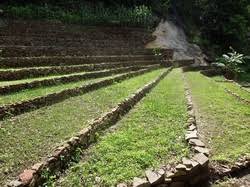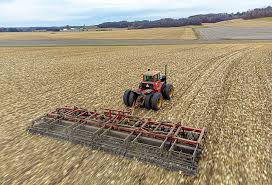Soil not only provides anchorage to plants, but all nutrients and water are absorbed through it. Therefore, all cultural practices in crop production are directed towards the improvement and maintenance of the soil’s physical condition to create a favourable environment for crop growth and development.
Water is indispensable for the growth and development of plants, and both excessive and insufficient water can determine the success or failure of crop production. This article addresses the various methods of soil and water conservation.
Principles of Soil Water Conservation
The principle of soil water conservation revolves around reducing run-off, percolation, and evaporation losses. Water management entails three basic practices:
- Conservation of natural precipitation (in sub-humid and arid regions),
- Drainage of wetlands
- Supplementation of rainfall with irrigation.
Read Also: Trichomoniasis: Description, Damages Caused, Control and Preventive Measures
Methods of Water Conservation

Water is often a limiting factor for crop production, particularly where irrigation is not available. Even in humid and sub-humid regions, where excess water might need to be disposed of, dry periods can cause water deficits. Positive responses to moisture conservation techniques are commonly observed in these regions.
Over 80% of the world’s agricultural land is not irrigated. In Africa, where slightly over 0.3% of the land is under irrigation (FAO, 1987), rain-fed agriculture predominates. In rain-fed systems, the challenge is not only the erratic rainfall distribution but also the amount of rainfall that can be stored in the root zone.
Mulches and Green Manures
Mulch is defined as a protective covering placed over the soil surface to minimize evaporation losses. Green manures can also serve as mulch. Other common materials used include leaves, straw, sawdust, paper, and plastics.
1. Importance of Mulch: Mulch intercepts solar radiation, reflecting light and keeping soil temperatures lower. It also reduces wind effects and improves infiltration by lessening the impact of raindrops on the soil. Mulch also minimizes run-off losses.
Run-off Control
Run-off occurs when the intensity of rainfall exceeds the soil’s infiltration capacity, which is the ability of the soil to absorb and transmit rainwater. Run-off is minimized in soils with high infiltration capacity, which depends on the soil’s water transmission characteristics, structural stability, and continuous pores.
These pores may result from coarse texture, good aggregation, or the burrowing activities of soil fauna like earthworms. The intensity and amount of rainfall, prior soil moisture content, relief, slope steepness, and other factors also influence the rate and amount of run-off.
Ways to Minimize Run-off:
- Careful and rational management of crop residues.
- Fallowing.
- Terraces and contouring.
- Strip cropping and ridging.
Fallowing
Fallowing is one of the most effective water conservation techniques, especially in areas of limited rainfall. It involves leaving land unplanted in alternate years or cropping the land for a few years followed by a period of fallow. The amount of moisture saved through fallowing is generally small but can be critical in dryland farming.
Read Also: 18 Medicinal Health Benefits Of Ligustrum lucidum (Glossy Privet)
Terraces and Contouring

These are methods for minimizing surface water loss, which can occur when water rushes down slopes after intense rainfall or excessive irrigation.
1. Contour Farming: This practice involves cultivating and planting on strips of land at the same elevation. Gently sloping terraces, separated by banks, help hold water on the surface, encouraging infiltration. Contour farming also prevents run-off and reduces soil erosion, preserving valuable nutrients in the topsoil.
Strip Cropping
This method involves growing crops in strips at right angles to water flow or prevailing winds, protecting adjacent strips of crops or fallow land.
1. Field Strip Cropping: Crops are grown in strips across the slope without following the contour.
2. Contour Strip Cropping: Crops are grown in narrow strips along the contour.
3. Wind Strip Cropping: Crops are planted in strips at right angles to prevailing winds, regardless of the land’s contour.
Agronomic Measures to Control Soil Erosion
Soil management practices are based on two broad principles:
- Practices that maintain soil infiltration rates, ensuring run-off is kept to safe levels, and
- Practices that ensure the safe disposal of run-off water from the field.
Cultural practices that help maintain a high infiltration rate include agronomic measures such as no-tillage or minimum tillage, stubble mulching, and cover cropping, all of which help maintain a mulch or vegetation cover on the soil.
Tillage Practices and Their Beneficial Effects

Tillage increases the infiltration of rainfall and reduces surface run-off. The no-tillage system conserves moisture in the soil profile and reduces run-off and soil loss to a minimum. It also maintains the organic matter content of the surface horizon, improving the soil’s water-holding capacity.
Tied-ridging and contour cultivation are also recommended as effective and economical conservation measures. Surface plant residues are highly effective at controlling erosion.
1. Minimum Tillage: Excessive ploughing and harrowing can destroy soil structure, reducing infiltration and increasing soil erosion, which leads to declining crop yields.
2. Mulching: Mulching with grass or plant residues prevents surface sealing by reducing the direct impact of raindrops on the soil, while promoting biological activity that improves soil structure.
Mulching effectively reduces run-off and erosion by slowing water movement over the surface and improving soil permeability. Stubble mulching, which leaves crop residues and weeds on the surface or partially buried, has similar benefits.
3. Crop Rotation: Growing wide-spaced row crops like sorghum, maize, cotton, and sugarcane continuously makes soil more vulnerable to erosion.
Conversely, growing grasses or legumes helps protect the soil from erosion by providing ground cover and improving soil structure and permeability. Including closely spaced cereal crops or grass-legume mixtures in the rotation helps minimize soil loss.
4. Strip Cropping: Strip cropping reduces soil loss by alternating strips of erosion-permitting crops with close-growing protective crops. The practice involves alternating wide-spaced row crops like sorghum with dense crops such as grasses or legumes.
5. Cover Crops: On steep slopes that are unsuitable for cultivation, forest or permanent pastures may be maintained. Gentler slopes can be planted with protective tree crops like cocoa, which provides a full canopy of foliage.
Less protective crops, like coffee or citrus, are planted on moderate slopes, while grasses and arable crops are suited to the gentlest slopes.
6. Soil Conditioning: To prevent the breakdown of soil aggregates due to raindrop impact, improving aggregate stability is essential. Soil conditioners such as bitumen emulsion, polyurethane, latex, and asphalt help preserve high infiltration capacity by minimizing aggregate destruction. These conditioners can be applied through incorporation or surface treatment.
Management Practices
Crops and management practices that promote early ground cover are more effective at controlling run-off and erosion. Mixed cropping is beneficial in this regard, as erosion and run-off losses are typically lower from mixed crops than from sole crops. Plant population, planting time, and fertility management are critical cultural practices for controlling erosion.
Measures to Control Wind Erosion
Measures to control wind erosion focus on maintaining soil moisture, increasing surface roughness, and reducing wind velocity. Practices that help achieve these objectives include:
- Minimum tillage,
- Ridging at right angles to the prevailing wind
- Early planting,
- Cropping in alternate strips
- Mulching and stubble mulching
- Planting windbreaks across the path of the wind to reduce its velocity and cause the deposition of moving soil particles.
Soil and water conservation are integral to sustainable crop production. Cultural practices such as tillage, cover cropping, crop rotation, strip cropping, mulching, terracing, contouring, ridging, and fallowing, when implemented judiciously, reduce surface run-off and erosion, increase water percolation, reduce evaporation, and ensure adequate drainage.
Do you have any questions, suggestions, or contributions? If so, please feel free to use the comment box below to share your thoughts. We also encourage you to kindly share this information with others who might benefit from it. Since we can’t reach everyone at once, we truly appreciate your help in spreading the word. Thank you so much for your support and for sharing!

